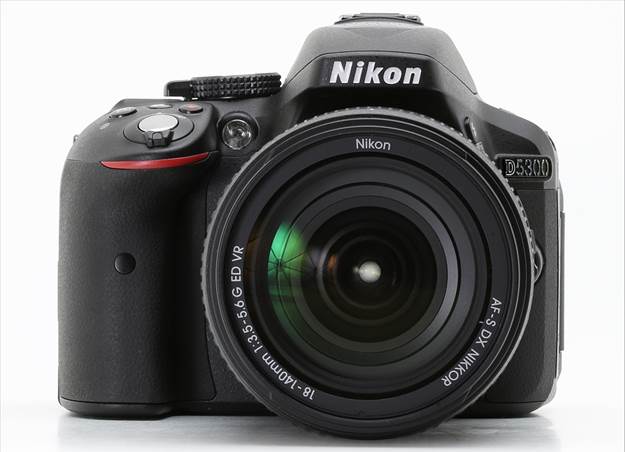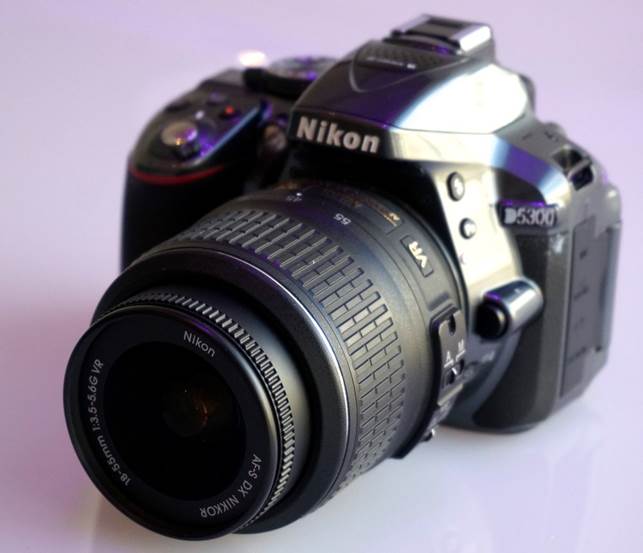THE NIKON D5300 follows the Nikon D5200 and
there is an important difference between the two. The D5300 has a new image
sensor without a low-pass filter, which contributed to an excellent performance
in our resolution tests.
The D5300 uses a display with a 3:2 aspect
ratio, which shows the whole sensor image without black borders or frames.
Compared to the Nikon D5200, the LCD screen is also larger, at 3.2”, and has a
very high resolution of 1.04 million RGB dots. The monitor is fully articulated
and makes for very comfortable shooting.

The
Nikon D5300 is the follower of the D5200. It offers 24MP resolution without a
low-pass filter, integrated GPS and Wi-Fi system, plus Full HD video recording
and more.
The camera has an optical viewfinder with
95 percent field of view, typical for this SLR class, but nevertheless
irritating when taking images that show more content than the photographer sees
in the viewfinder. The LCD screen, however, shows 100 percent field of view. A
switch next to the mode dial on the top of the camera toggles between the
optical viewfinder and the live preview on the screen.
The camera offers numerous function buttons
and setup wheels for fast and efficient control of each parameter. The “i”
button on the back shows the most important image parameters on the LCD screen,
which is very helpful when changing the settings. It is very easy to control
focus mode, ISO speed setting, and more with this “shortcut” menu. The camera
offers only one setup dial on the back to change image parameters, which is
fine for entry-level systems but is disappointing for a mid-range SLR camera.
There are some very handy features, such as
a digital “tilt” control, shown as an overlay on the LCD screen. It shows the
deviation from horizontal lines plus a moving rectangular shape that indicates
tilting to the front or back of the camera. The built-in flash system helps
with backlit scenes. The small flash can also be used as a master for Nikon’s
Advanced Wireless Lighting with Nikon flash systems like the SB-900 Speedlight.

There
is no status display on the top. A large switch near the mode dial allows the
user to toggle between optical viewfinder and electronic viewfinder on the LCD
screen very fast and comfortably.
The camera is Nikon’s first SLR with an
integrated WLAN system. Until now, Nikon offered optional WLAN adapters for
professional SLRs, while many Nikon compact cameras already have built-in Wi-Fi
functions. Nikon also offers a free app to use smartphones and tablet computers
as a remote control for the D5300, available for both Android and for Apple
iOS. Unfortunately, this app isn’t as easy to use or as powerful as apps for
Canon or Panasonic cameras. For example, the Nikon app shows a live preview on
the remote device and allows the user to use a virtual shutter release—that’s
it. Canon and Panasonic apps and WLAN cameras allow users to change image
parameters like shutter speed or aperture, and in some instances they are able
to set up the active focus area and more. Hopefully Nikon will change this in
upcoming app versions.

The
swivel monitor is fully articulated and can be flipped up- and downward and
rotated to the back or the front. Shooting videos is very comfortable with this
LCD.
The AF system of the Nikon D5300 is very
fast. It uses 39 AF sensors (nine cross-type sensors in the center of the AF
area) and even keeps fast-moving objects in focus while shooting images or
videos. Combined with the Expeed 4 image processor, the camera worked fast and
can be used for sports photography. The camera can take up to 5 images per
second, which is a pleasing result for a mid-range SLR.